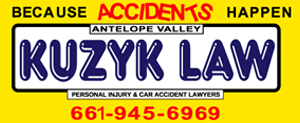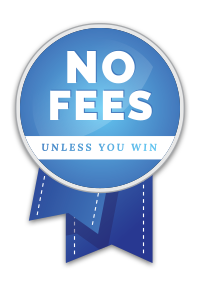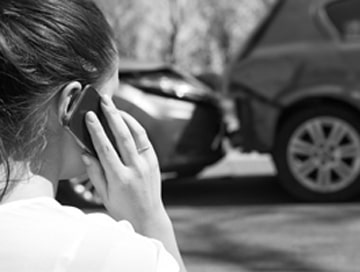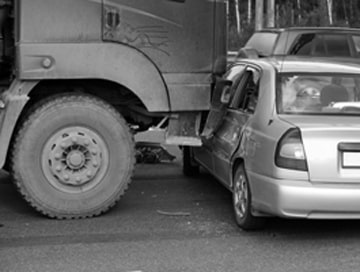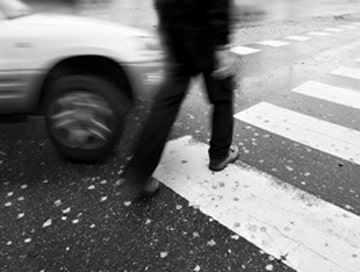Have you been injured in a Fresno car accident? If so, you likely want to know, “How much can someone sue for a car accident?”
Your legal rights are useless following a crash if they don’t enable you to recover the compensation you need to address your financial needs and losses. In deciding whether to file a lawsuit or insurance claim, you must understand how car accident compensation is typically calculated and awarded.
There’s no specific amount you might expect for a settlement for a car accident, as the amount of damages you can receive is determined by several factors that can vary significantly from situation to situation. Furthermore, the amount you might be eligible to receive may not be what you actually get.
Here’s what you should know about the factors that go into settlements and some average amounts.

Damages Available in California Car Accidents Lawsuits
You can generally pursue a claim for damages in the aftermath of a car accident where you sustain an injury. These damages are meant to compensate you for the injuries themselves, your resulting losses, and other effects you’ve experienced due to the collision.
There are three primary types of damages: economic, non-economic, and punitive. Each of these types of damages (or a combination of the three) may be awarded, depending on the circumstances of the case.
Economic Damages
You can seek economic damages to cover medical bills, lost wages, insurance copays, and any other financial loss you’ve suffered. Economic damages are awarded to help alleviate the financial burden an accident can impose on you.
If a particular loss has a bill, invoice, estimate, billing statement, or other objective evidence that supports it, economic damages can potentially provide compensation for it.
Non-Economic Damages
Non-economic damages may be available to help make you whole for the mental and emotional impacts of your accident. The discomfort of pain and inability to enjoy things you used to do is difficult to quantify in dollars and cents. However, these impacts are no less real and deserve financial restitution just like your economic losses.
Punitive Damages
In some cases, punitive damages may also be available.
Unlike economic and non-economic damages, which seek to compensate you for a loss you’ve experienced, punitive damages are awarded to you to punish the other party. This type of damages is awarded rarely and only in situations where the at-fault party acted in some especially egregious manner or with malice or intent.
In most cases, injured individuals first look to the at-fault driver’s insurance policy for compensation. That person’s insurance policy will pay the injured party’s claim up to the policy’s limits.
If the parties don’t settle for this or some lesser amount, and the injured party isn’t fully compensated, the injured party may look to the driver personally for additional compensation.
Court Verdicts vs. Car Accident Settlements
One of the primary factors determining the amount of damages someone receives in their car accident case is whether they settle their claim out of court or take their case to trial. The differences between these two methods of resolving your claim and receiving damages are as follows.
Settlements From Car Accidents
A settlement is an agreement between you and the at-fault driver who caused your injuries, known as the “defendant.”
In most settlements for car accidents, the defendant agrees to pay the plaintiff a specific sum in damages. In return for this payment, the plaintiff agrees not to pursue additional compensation from the crash through their car accidents lawsuits.
The primary benefits of a settlement are predictability and the speed with which claims are ordinarily resolved.
A settlement can be reached anytime, even before a lawsuit is formally commenced. Just as the parties can agree on an appropriate amount, they can also agree on how quickly those damages will be paid. Finally, because a settlement is a private agreement between the parties, it doesn’t depend on a judge or jury.
The main disadvantage of a settlement is that typical car accident settlement amounts aren’t usually as great as jury verdicts. This isn’t because motorists who settle their cases aren’t hurt as badly as others. Rather, in a settlement, each party typically gives up some of what they might obtain through a trial.
Defendants give up the possibility of being found not liable for any damages, while plaintiffs typically give up recovering the full amount of damages they might receive at a trial.
Car Accident Trials
If you and the other party cannot settle, you’ll only be able to recover damages by proceeding to trial.
At trial, you must present evidence and witness testimony showing that the defendant’s negligent behavior more likely than not led to your injuries. Once you’ve proven this, a judge or jury will consider your evidence and determine the types and amounts of damages you should receive.
The advantage of a trial for plaintiffs is that a judge or jury could find that they’re entitled to the full amount of damages they’re requesting. Whereas plaintiffs typically settle claims for less than they’re worth during settlement negotiations, there’s no incentive or need to do so when a judge or jury decides the matter.
That said, trials can be unpredictable. A court might not be convinced that you were injured as severely as you claim and might award you less damages than you seek. Or the court might consider that the defendant wasn’t negligent at all and decide not to award any damages to the plaintiff.
Other Factors Affecting Damages
Whether a case is resolved through a settlement or a successful trial verdict, other factors can impact the amount of damages a plaintiff receives. They include the following.
The Extent of Your Injuries
The question of how much can someone sue for a car accident depends in large part on how severely they’ve been hurt.
The average settlement for non-injury car accidents will always be less than typical car accident settlement amounts with injury or harm present. Similarly, the more harm you sustained in your crash, the larger you can expect a court award to be.
You should make every effort to minimize your injuries by getting prompt medical attention, taking prescriptions as directed, and following your doctor’s advice. Failing to do so can not only subject you to needless harm and suffering but also limit the compensation you stand to receive due to comparative negligence.
The Strength of Your Evidence
Following a car accident, you and your attorney will collect evidence to support your accident claim.
This evidence should establish the defendant’s negligence, as well as the extent to which that negligence caused you injury. The more witnesses and objective evidence you have that support your claim, the better positioned you’ll be to receive a large damages award.
It’s equally important, however, that the evidence you possess be persuasive. Even if you don’t have an abundance of physical evidence or witnesses to support your claim, credible evidence and witnesses can offset this deficit.
Absence of Comparative Negligence
In California, any damages you’re entitled to receive can be reduced if you’re found to have also been negligent in the accident that caused your injuries.
The amount by which your award is reduced is proportionate to the role your negligence played in causing your injuries. However, if you didn’t act carelessly in the situation at all, your damage award wouldn’t be reduced.
For example, suppose that a careless motorist strikes you while you’re going through an intersection. They weren’t paying attention to what was happening around them and failed to obey a stop sign. In this situation, they would be responsible for paying damages to address your injuries and losses.
Now let’s say you weren’t wearing your seat belt. While this oversight didn’t cause the crash to occur, it very probably impacted how severely you were injured.
In this instance, a court would likely reduce any damages you otherwise would have received to account for the role your failure to wear a seat belt played. For the same reason, you likely wouldn’t be successful in settling your case for as much as you would had you been wearing your seat belt.
The Defendant’s Financial Resources
The amount of damages you can recover also depends in part on the defendant’s financial resources.
Consider a defendant with a liability insurance policy with limits set at the state minimum and no other assets. Such a defendant can’t afford to pay out as much as one with a robust insurance policy with high limits or numerous valuable assets.
A defendant with fewer resources will usually settle their case for less than one with more money or assets simply because they can’t afford to pay more. Even if a defendant with few assets is ordered to pay a large damages award at trial, you could find it difficult to actually collect.
Typical Damages Awards for Plaintiffs in California
An experienced Fresno car accident lawyer who’s taken the time to review your case thoroughly is in the best position to give you an accurate estimate as to the amount of damages you can receive. That said, here are some general expectations.
Average Settlement for Car Accidents
The average car accident settlement amount depends on whether you sustained any injuries in the wreck or only suffered property damage.
The average settlement for non-injury car accidents will be limited to the cost of repairs or replacement of your vehicle. As a result, typical car accident settlement amounts (no injury reported) might be as low as a few hundred dollars or as much as $10,000–$20,000 if the vehicle must be replaced.
A settlement for car accidents involving injuries will usually be larger.
Depending on the extent of your injuries and losses and other factors, your settlement could range from several thousand to tens of thousands of dollars. Those who are permanently disabled or disfigured in a catastrophic wreck could see settlements in the hundreds of thousands.
Typical Court Verdicts for Car Accident Victims
Because settlement amounts tend to be lower than the full amount of compensation, the amount of damages you could receive through a trial verdict will generally be larger than that of a settlement. In the case of a non-injury accident, your damages will still generally be limited to the value of vehicle repairs or replacement.
However, you could also receive compensation for incidental expenses like rental car costs and time missed from work. You might also be able to recover your personal injury attorney’s fees in Fresno. This means that your damages award will still likely be between a few thousand and $20,000, on average.
If you’re injured, you could see damages awards ranging from as low as a few thousand dollars to hundreds of thousands or even millions.
This is because, with injury cases, you’re more likely to recover damages for pain and suffering and, in some cases, punitive damages. Barring exceptional circumstances, a verdict for an injury wreck might fall between $25,000 and $75,000.
Trust Kuzyk Personal Injury & Car Accidents Lawyers for Help Recovering Compensation
If you’re curious about how much can someone sue for a car accident and recover, Kuzyk Personal Injury & Car Accidents Lawyers’s experienced team can help you get the results you need. We’ll pursue just compensation for you, whether through settlements from car accidents or a court verdict. Contact Kuzyk Personal Injury & Car Accidents Lawyers today to request a free consultation to discuss your case.
